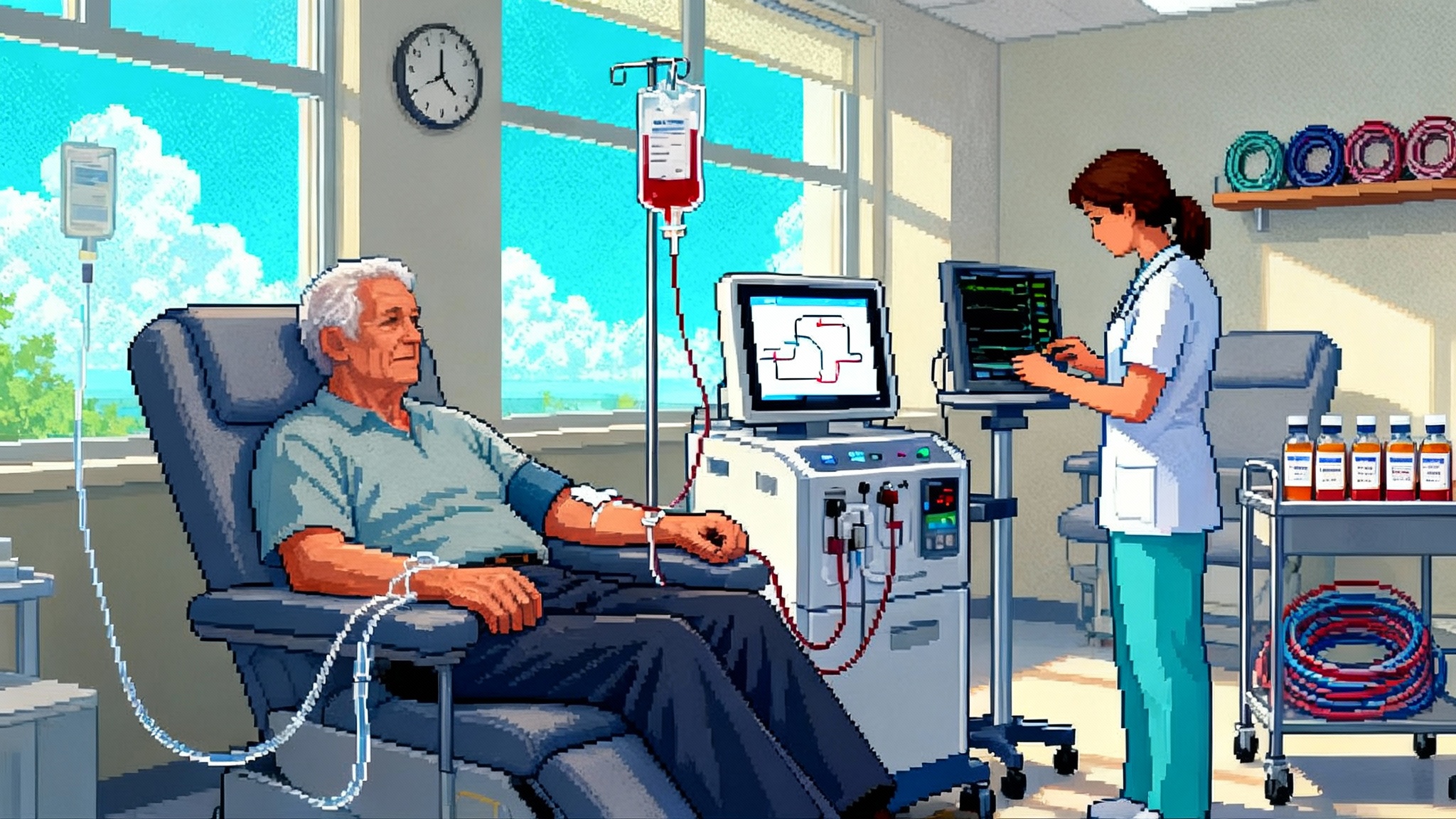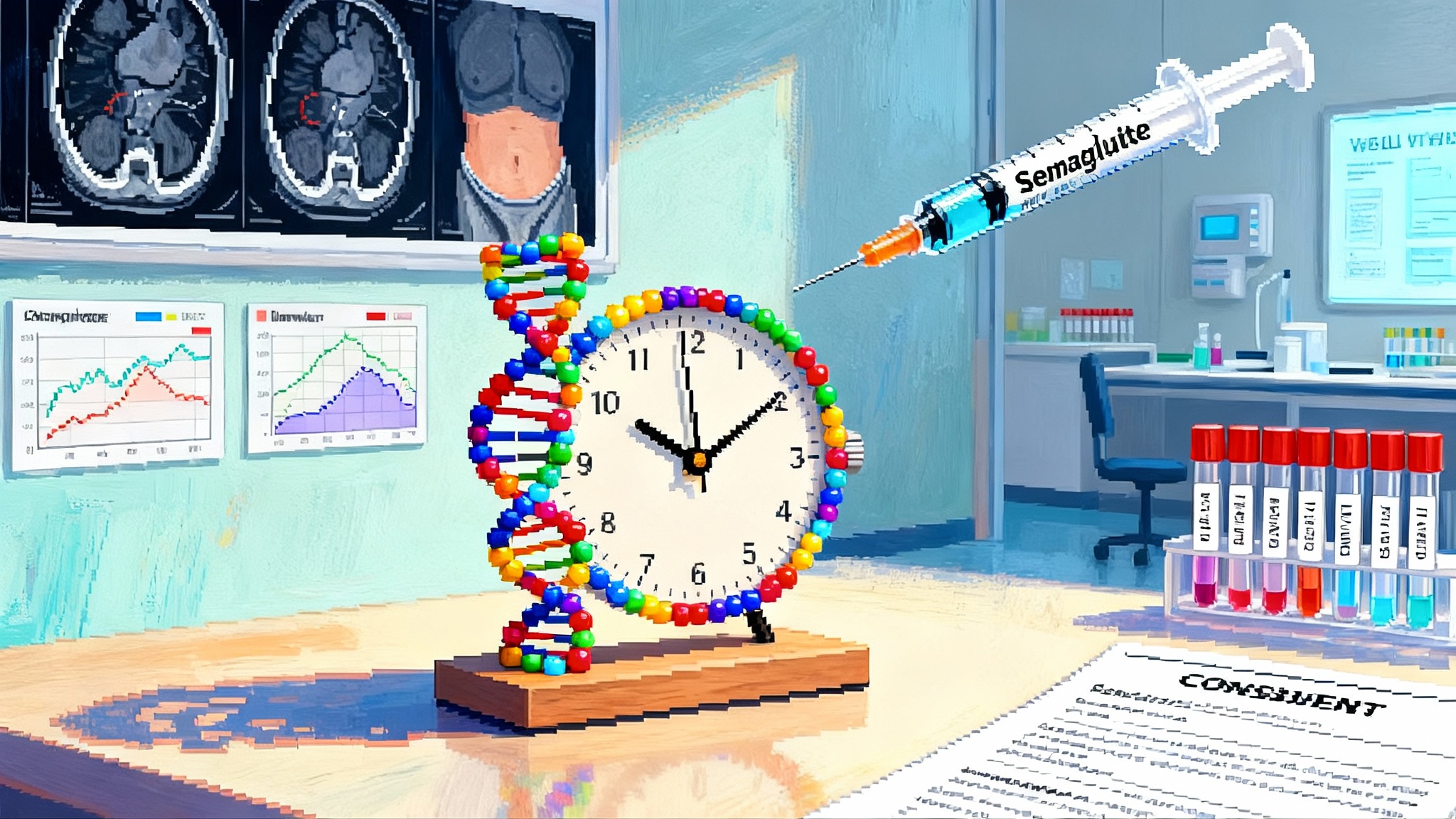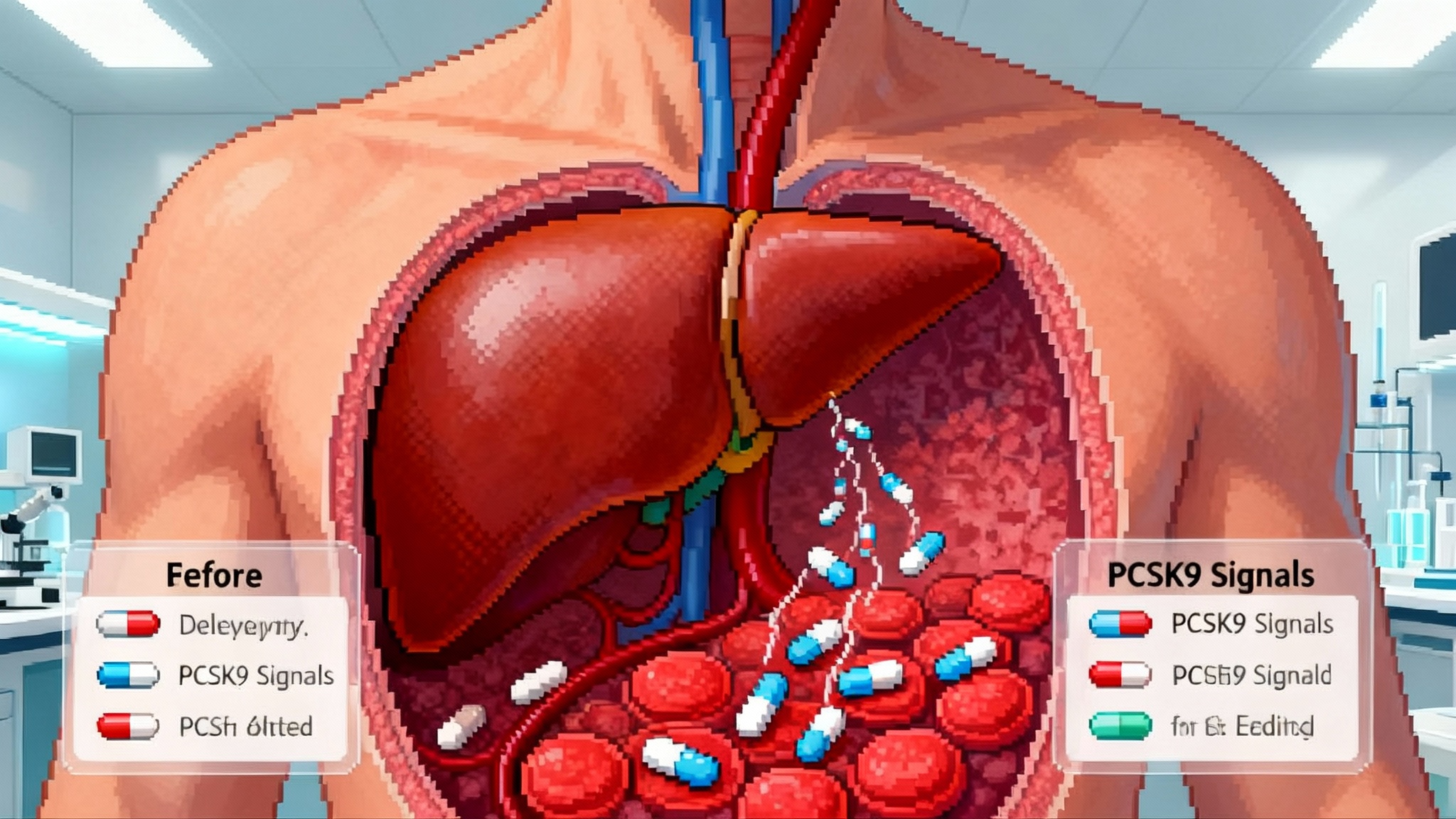After FDA Reversal, Aging Clocks Return to the Clinic
The FDA’s September 2025 pivot on LDT oversight is sending epigenetic and proteomic aging clocks back into hospitals. Here is what returns, where these tests fit first, and the validation guardrails that make them clinical tools.

The reversal that reopened the door
On September 19, 2025, the Food and Drug Administration changed direction on how it would oversee many laboratory developed tests. For hospital and reference labs operating under the Clinical Laboratory Improvement Amendments, the shift landed like the lifting of a fog. In practical terms, more tests can once again be offered as CLIA LDTs without premarket review by the Food and Drug Administration, provided labs meet analytic validation and quality system requirements that CLIA and accreditation bodies already demand. That change is especially consequential for a category that had been stuck on the sidelines in 2024 and early 2025: biological aging biomarkers.
Epigenetic clocks built from DNA methylation signals, proteomic clocks based on plasma protein patterns, and related measures like glycan profiles have lived in a gray zone. Many were validated in cohorts and sold as consumer wellness reports, but real clinical use inside health systems and payer programs did not scale. The September decision invites those tools back into the clinical lane. You can almost hear the centrifuges spinning again.
What comes back, and why it matters now
Aging clocks translate molecular signals into estimates of biological age and pace of aging. If chronological age is the date printed on a driver’s license, biological age is the engine wear, and pace of aging is the rev counter that tells you how hard the engine is working right now. That difference matters because risk in the clinic is not evenly distributed by birthdays. Two 60 year olds can have very different risk curves for cardiovascular events, cancer recurrence, or loss of function after surgery. Clocks give clinicians a way to quantify that divergence.
The rollback makes it feasible for CLIA labs to revive and newly launch epigenetic LDTs based on bisulfite sequencing or arrays, proteomic LDTs built on platforms like targeted mass spectrometry or affinity based panels, and hybrid scores that combine methylation, proteins, and clinical labs. Expect to see:
- Epigenetic clocks such as GrimAge like surrogates, PhenoAge like composites, and pace of aging measures trained on longitudinal cohorts.
- Proteomic clocks that infer biological age from panels of inflammatory and metabolic proteins measured from plasma.
- Niche clocks for organ specific aging, for example liver or vascular age, created by training against imaging or biopsy derived ground truth.
The reentry path does not magically solve every limitation. But it allows these tests to move from wellness portals to order sets inside electronic health records. That single shift will spawn data, and data will sharpen both models and use cases. For readers watching drug signals in metabolism and inflammation, see how a GLP-1 agent showed a potential effect in Semaglutide’s 2025 clock signal.
Near term clinical plays that make sense
The temptation is to declare biological age a new vital sign tomorrow. A better approach is to plug clocks into decisions clinicians already make that are sensitive to underlying physiology and where timing matters.
- Cardiometabolic screening with action thresholds
- Use case: Adults 40 to 75 with borderline risk by traditional calculators, or those whose lipid and glucose markers suggest rising risk, but for whom treatment intensity is uncertain.
- How it helps: Add a validated clock that correlates with incident cardiovascular events, then predefine threshold based actions. For example, if biological age exceeds chronological age by a set margin and pace of aging is high, escalate from lifestyle only to a medication plus nutrition intervention. If biological age is younger than expected and pace is slow, stay conservative, but schedule repeat testing at a longer interval. For drug strategy context, see one and done LDL therapy.
- Guardrail: Use clocks as a tiebreaker rather than a sole decider. Require corroboration from blood pressure, lipids, and inflammation markers before intensifying therapy.
- Preoperative risk stratification
- Use case: Elective orthopedic or general surgery in older adults where estimated risk sits near a decision boundary.
- How it helps: Biological age and pace can flag reduced physiologic reserve. Patients with older biological age may benefit from prehabilitation, tighter glycemic control, and extended observation. Younger biological age can support same day discharge pathways that reduce cost without increasing complications.
- Guardrail: Pair clock results with frailty indices and anesthesia risk scores, and document the composite decision path.
- Oncology survivorship and late effect surveillance
- Use case: Patients in remission after chemo or radiation, where long term cardiometabolic monitoring is indicated but adherence is variable.
- How it helps: A clock can personalize surveillance intervals. Higher biological age could move patients to quarterly monitoring and cardioprotective therapy earlier. Lower biological age supports standard intervals.
- Guardrail: Clocks inform surveillance but do not replace guideline based tests like echocardiography when indicated.
- Geroscience trial enrichment
- Use case: Early and mid stage trials of interventions that target aging biology such as senolytics, rapalog combinations, or metabolic modulators.
- How it helps: Enroll people whose biological age or pace of aging suggests higher near term event rates, which increases power for hard endpoints. Alternatively, use clock change as a supportive biomarker to bridge to later outcomes. For context on a clinical program, see senolytics in a 2025 eye trial.
- Guardrail: Pre specify how the biomarker will be used, include cross validation against clinical endpoints, and report subgroup performance to avoid biased selection.
Payer and employer pilots to watch
Coverage will not flip overnight. But the ingredients for near term pilots are already present in the market.
-
Medicare Advantage innovators: Plans with integrated provider groups and in house analytics can test bundled programs that include a clock, pharmacist led medication adjustment, and nutrition coaching for high risk members. Think of organizations that already run pharmacist titration clinics, remote monitoring, and cardiac rehab at scale. They can add a clock to an existing risk algorithm and measure admissions avoided and drug optimization.
-
Large self insured employers with on site clinics: Employers that already offer biometric screening, vaccinations, and mental health support can add a clock to annual wellness visits for eligible age bands. The play is not a vanity age score. The play is a triage tool that routes people into cardiometabolic programs, menopause and andropause care, and sleep interventions with clear goals and retesting at six to twelve months.
-
Provider sponsored health plans: Integrated delivery networks that own both the clinic and the plan can run pragmatic trials. They can compare standard risk tools versus standard plus clock, tracking cost of care, medication adherence, and patient reported outcomes.
-
Benefits navigation platforms and care orchestration vendors: Companies that handle care navigation for employers can position clocks as part of a precision prevention bundle. They can also help with the practical work, from sample collection to interpretation and follow up scheduling.
A credible pilot starts small, says what success looks like up front, and reserves budget for remeasurement. That last part matters because the value of a clock is not the single number, it is the change in that number when someone changes course.
Validation guardrails that make biological age a clinical tool
If biological age is going to sit next to blood pressure on intake forms, we need structure. The good news is that CLIA already provides a framework for analytic validation inside each laboratory. The translational work is to align analytic validation with clinical validity and clinical utility. Here is a pragmatic checklist.
Analytic validation fit for purpose
- Pre analytical controls: Specify tube types, fasting status, time to processing, and shipping temperature windows. Publish the stability profile. If a sample sits for 72 hours in transit, the lab and clinician must know whether the result is valid or needs recollection.
- Accuracy and precision: Report within run and between run coefficients of variation, and repeatability on contrived and real samples across the reportable range. Define the minimal detectable change so clinicians understand how much movement is real versus noise.
- Platform changes: Lock and version the model. If the lab migrates from arrays to targeted sequencing, or from one proteomic platform to another, run a bridge study on a sufficient number of paired samples and show equivalence or recalibrate.
Clinical validity in the populations who will use the test
- External replication: Show that the clock predicts incident outcomes in at least one cohort not used to develop the model. When possible, include community care settings rather than only academic centers.
- Subgroup performance: Report calibration and discrimination across sex, ancestry, socioeconomic status, and smoking history. Publish where the model performs less well and how the lab will mitigate bias.
- Correlates and independence: Clarify when a clock adds unique information beyond standard risk scores. Use decision curve analysis to quantify net benefit of adding the clock to care pathways.
Clinical utility tied to actions and outcomes
- Action thresholds: Define thresholds that trigger changes in care, and tie them to expected benefits and risks. Avoid bespoke cutoffs for every clinic. Consistency is how you build trust.
- Retest interval: Recommend minimum retesting windows that respect biology and assay noise. Ninety days is a common starting point for lifestyle focused programs. Twelve weeks is a common interval for medication changes that alter inflammation and metabolism.
- Reporting clarity: Present the result with a confidence interval, percentile versus age peers, and a plain language interpretation. Include suggested next steps that are reviewed by the laboratory medical director.
Governance and transparency
- Version control and audit trails: Timestamp every model version and laboratory run. Record who changed what and when. This is basic, and it prevents silent drift.
- Education for clinicians: Provide short modules that explain what the clock measures, how to interpret the result, and how to combine it with routine labs. Include case studies.
- Patient communication: Avoid deterministic language. A clock is not a verdict. It is a barometer that changes with weather and behavior.
Ethics and equity
- Fairness audits: Run routine checks for performance parity. If a model underestimates risk in a subgroup, either recalibrate or avoid high stakes use in that subgroup until fixed.
- Data minimization and privacy: Keep only what is needed to provide and improve the test. Epigenetic data can be identifiable, so apply strong access controls and de identification where possible.
How CLIA labs can move now, step by step
- Choose one to two use cases where you can show clinical utility within twelve months. Cardiometabolic risk and oncology survivorship both fit the bill.
- Lock a model and perform analytic validation under CLIA. Document pre analytical variables, precision, accuracy, and stability. Recruit a small set of external collaborators for inter laboratory comparisons.
- Draft a clinical validation plan that includes at least one external cohort and prespecified statistical measures. Publish the protocol summary. Transparency earns trust.
- Build a report that clinicians can parse in under one minute, with a front page summary, a clear interpretation, and suggested actions that map to existing order sets.
- Train the first wave of users. Start with clinicians who volunteer, not those who are compelled. Capture feedback and revise the report before wider deployment.
- Stand up a governance group that includes a laboratory director, a biostatistician, a primary care physician, a cardiologist, and a patient representative. Meet monthly during the pilot period.
For payers and employers, a simple value story
Aging clocks are not magic, but they can be useful cheap sensors when used with intent.
- Cost frame: Price the assay as part of a bundle that includes counseling or medication management. The outcome to track is avoided events and optimized therapy, not the clock itself.
- Member experience: Position the test as a way to personalize next steps. Do not market a vanity age. Market clarity. Members care about the decision that follows, not the novelty of the number.
- Measurement plan: Pick two or three primary outcomes. For example, percent of members moved to guideline directed lipid therapy where appropriate, change in hemoglobin A1c among those with elevated biological age, or reduced readmissions in a preoperative program.
- Equity guardrail: Budget for community outreach and ensure access to retesting. If only high earners retest, you may widen disparities.
Signals that this market is moving
Watch for three near term signals between now and mid 2026.
- CPT coding activity: Proprietary Laboratory Analyses codes or new Category I codes for defined panels. Even if reimbursement is not immediate, codes enable tracking and negotiation.
- Accreditation body checklists: Expect new or updated College of American Pathologists checklist items specific to methylation and proteomic LDTs, including pre analytical stability and proficiency testing options. If proficiency testing is not available, expect inter laboratory sample exchanges to serve as a stopgap.
- Electronic health record integration: Once you see biological age and pace measures available as discrete fields with LOINC like identifiers and flowsheet support, you will know the test is moving from novelty to workflow.
The bottom line, without overreach
Calling biological age a vital sign is a strong claim. It will only be true if the measurement changes care, and if changed care reliably improves outcomes. The Food and Drug Administration’s September 2025 rollback does not bless any single clock. It simply removes a regulatory choke point that kept well validated LDTs from entering the places where health decisions are actually made.
If you build or buy these tests, do it with a purpose. Start where clocks can tip a decision that was already in doubt. Be explicit about thresholds and retesting. Publish your validation playbook. Invite external checks. Treat the number as a compass heading, not a prophecy.
The future arrives in small, specific steps. With the clinic door reopened, epigenetic and proteomic clocks can finally take those steps inside real care pathways. If the field builds with discipline and humility, biological age will earn its chair next to blood pressure and heart rate. The gains will not come from the excitement of a score, but from thousands of better decisions that score quietly helps clinicians make.








